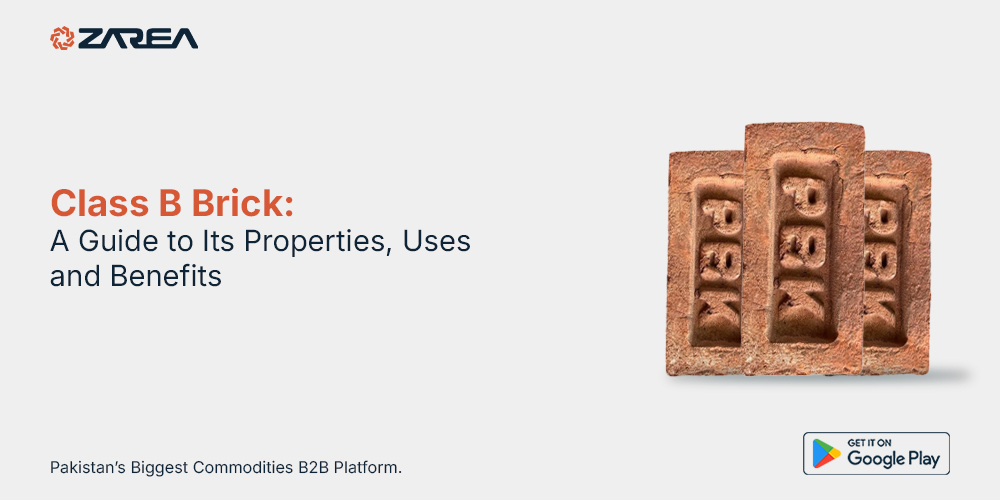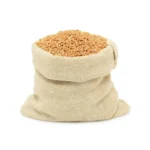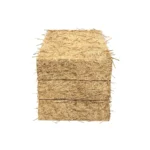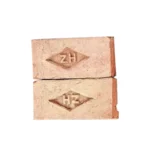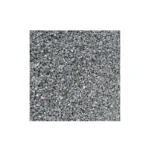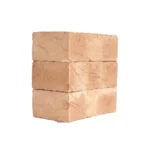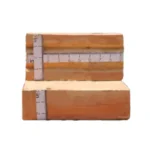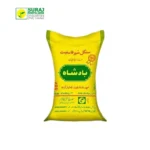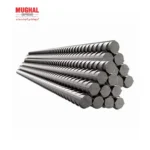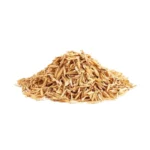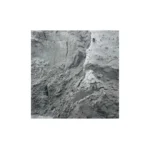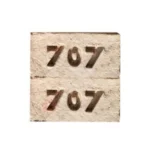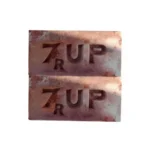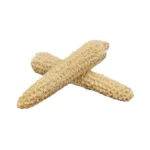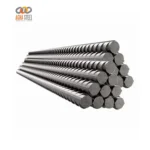Class B Brick: Properties and Benefits
Class B brick is a common choice for general construction, especially in non-structural roles such as partitions or garden walls. They are known for their uniform shape and size, although they may have slight variations compared to Class A bricks. Their properties include moderate strength, durability, and a traditional, rustic appearance that works well for projects where visual aesthetics are less of a priority.
Key Properties:
- Compressive Strength: Typically lower than Class A, but still suitable for most non-load-bearing applications.
- Color: A more muted appearance compared to high-quality facing bricks.
- Tolerance: Slight variations in dimension and shape.
- Absorption Rate: Balanced water absorption ideal for various weather situations.
Uses and Benefits:
- Partition Walls: Perfect for constructing interior walls that do not support significant weight.
- Garden Walls: Due to their rustic look and affordability, Class B bricks are often used in garden construction.
- Cost Efficiency: More affordable than Class A bricks, making them an attractive choice for larger projects on a budget.
Thermal Efficiency: Their density provides decent thermal mass, helping with insulation.
What is 2nd class brick?
A 2nd class brick is a kind of brick that ranks in the average category regarding quality. It’s not flawless, but it’s reliable, steadfast, and accomplishes the task—similar to a loyal companion. 2nd class bricks exhibit minor surface flaws and lack the crisp edges and polished surfaces found in 1st class bricks. However, don’t undervalue them due to these minor imperfections; they adhere to important quality benchmarks, rendering them suitable for various structural applications.
These bricks are typically used for less demanding construction tasks—where you need something strong, but aesthetic perfection isn’t required. Think of walls that will be plastered later or load-bearing structures that do their job behind the scenes, away from the limelight.
Quality standards for Class B brick is not as high as for 1st class bricks. They’re fired at lower temperatures, resulting in a somewhat less refined finish. In simple terms, they might look rougher and have some chips, but they’re still ready to hold your structures up with reliability.
2nd Class Brick: Characteristics and Uses Explained
2nd class bricks have specific characteristics that make them distinct from their counterparts. For one, they are easily recognizable by their somewhat rough texture and uneven edges. Unlike 1st class bricks, which are precisely molded and machine-made, 2nd class bricks are generally made by hand. This traditional craftsmanship leaves behind its signature: visible blemishes, rounded edges, and a non-uniform appearance.
They’re fired in kilns, but the temperature control isn’t as precise as it is for higher-class bricks, leading to variations in the quality. However, despite these minor flaws, they’re remarkably durable. Their strength ranges between 7 to 14 MPa (Megapascals), which is a respectable range for many common construction purposes.
And what are these uses, you ask? Well, let’s start with internal walls. If you’re building an interior structure, Class B brick offers the perfect balance of cost-effectiveness and strength.
2nd Class Brick vs. 1st Class Brick: Key Differences and Applications
You might wonder, why choose a 2nd class brick when you could have a 1st class brick? The answer, my friend, lies in understanding both their differences and the specific needs of your project. 1st class bricks are the pristine, precisely molded superstars. They are machine-made, with sharp edges and a smoother surface, fried to perfection in kilns to create a flawless product.
These bricks are frequently utilized for exterior facades, where aesthetics are important. Due to their minimal water absorption and increased density, they are ideal for constructing structures that need to endure harsh weather conditions. Conversely, 2nd class bricks prioritize dependability and cost-effectiveness over aesthetic beauty.
They are less dense and retain more water, making them suitable for scenarios where cost and functionality are more important than appearance. Why utilize premium bricks in a wall that will be covered with plaster and paint? That’s the inquiry numerous builders ponder, and the response is—you don’t.
Second-class bricks meet that need: they reduce costs while guaranteeing that your walls and structures remain sturdy and reliable. It’s about selecting the appropriate brick for the specific task—and that’s the reason each type of brick has its own designated purposes.
What Makes 2nd Class Bricks Unique? A Complete Guide
Let’s discuss what characteristics make 2nd class bricks particularly distinctive. Certainly, they may not be as flawless as their first-class counterparts, yet their imperfections hold a unique charm. Every 2nd class brick possesses a unique narrative. Shaped by hand and fired in a kiln, they showcase the evidence of the skill involved in their production. You can nearly envision a brickmaker shaping these bricks, with each one being somewhat distinct from the others.
This individuality doesn’t hinder their function, though. Instead, it gives these bricks a character that’s hard to replicate with machine-made products. Moreover, these bricks bring with them the affordability that many builders seek. Their lower production costs make them an ideal option for cost-effective construction without compromising too much on strength.
Builders looking to reduce costs but still maintain a solid structural integrity often opt for 2nd class bricks. They’re the dependable, sturdy bricks that know they’re not center stage but still make a crucial contribution behind the scenes.
How to Identify 2nd Class Bricks: Qualities and Common Uses
Identifying a 2nd class brick is easier than you think. The first thing you’ll notice is their appearance—they’re not uniform, and their edges aren’t sharp. If you hold one, it might even feel a little rough, and you could see some small cracks or uneven patches. That’s normal for 2nd class bricks. They don’t have the smooth finish of a 1st class brick, but that’s not necessarily a disadvantage. A simple trick is to give it a gentle knock.
If it makes a clear, metallic sound, that’s a good sign that the brick is well-burnt and solid. If the sound is dull, it might indicate under-burning, which is a common occurrence in 2nd class bricks but should be minimal for good quality. Look at the color too—it should be uniform throughout, indicating that it was fired evenly in the kiln.
In terms of applications, as previously noted, these bricks are ideal for projects where they will eventually be concealed—like internal walls that will receive plaster or render. They are additionally utilized for temporary constructions, surfaces, or non-essential building projects.
These are instances where appearance is less important, yet the structure still must remain strong and enduring. It’s clear to understand why many builders prefer 2nd class bricks as their choice. Their adaptability and cost-effectiveness render them essential in the construction industry.
Conclusion
Within the realm of construction, each kind of brick serves a purpose, and 2nd class bricks are included. While they might lack the perfect appearance or the premium quality of first-class bricks, they provide an alternative: affordable durability and dependability. In projects where looks aren’t the primary focus, but strength and cost-effectiveness are, 2nd class bricks meet the need perfectly.
They are dependable building blocks for internal walls, temporary structures, boundary walls, and more. Their imperfections make them unique, and their strength makes them indispensable. Ultimately, Zarea play’s a vital role in Class B brick. So, It’s a reminder that, in construction as in life, not everything has to be perfect to be valuable.
They have a character and purpose that cannot be overlooked, serving as the backbone of countless structures. So, the next time you see a sturdy wall or an unassuming partition, remember that behind it, there just might be a 2nd class brick doing its job—without any need for the spotlight.
FAQs
What is a second class brick?
Second class bricks are moderately strong bricks that have some imperfections, such as rough edges or slight unevenness. They are often used for non-exposed walls where a plaster or finishing coat will cover them. Despite their imperfections, second class bricks are durable and economical for many construction purposes.
Which type of brick is strongest?
Class A engineering bricks are the most durable type of brick. They are recognized for their strong compressive strength, density, and minimal water absorption. These bricks are typically utilized in load-bearing constructions, foundations, and areas that need maximum strength and reduced moisture permeability.
What is the weakest brick?
Third class bricks are the least strong type of bricks. They are soft, porous, and often soak up more water, rendering them inadequate for applications in damp environments or as load-bearing constructions. Third class bricks are mainly utilized in temporary buildings or constructions that have low load demands.
What is the best brick to buy?
The best brick to buy depends on the specific use. For high durability, choose Class A engineering bricks. For general construction, first class bricks are ideal due to their strength and uniformity. If budget is a concern and the bricks won’t be visible, second class bricks are a cost-effective option.
References
- Kumar, S. (2020). Building Materials and Construction. New Delhi: Techno Press.
- Bureau of Indian Standards (BIS). (2015). IS 1077: Common Burnt Clay Building Bricks – Specification
- Duggal, S. K. (2019). Building Materials
- Garg, R. (2018). Construction Materials

